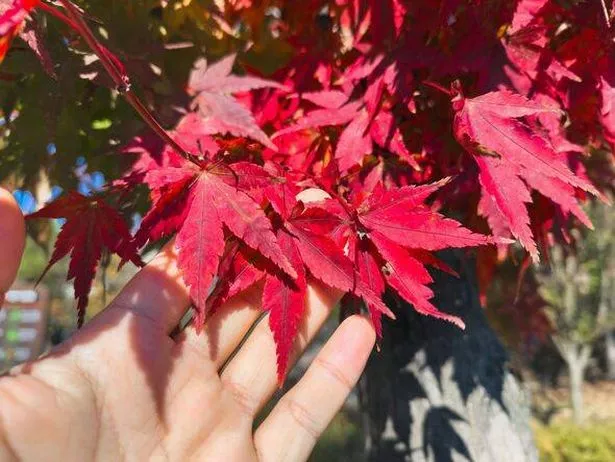Pruning is a key task when it comes to caring for Japanese maples, yet many gardeners are left baffled about how to do it properly. Pruning is a crucial task when it comes to caring for Japanese maples(Image: Getty)
Pruning is a crucial task when it comes to caring for Japanese maples(Image: Getty)
Pruning Japanese maples is essential for their care, but many gardeners struggle with the proper technique. Poor pruning can “destroy their beautiful shape and foliage”, warned horticulture specialist Jessica Walliser from Savvy Gardening.
Japanese maples remain a popular choice for gardeners seeking small, ornamental trees that combine elegance with vibrant seasonal colour. Known for their graceful form and delicate foliage, these deciduous trees are valued both in traditional Japanese gardens and in modern suburban spaces, thriving in borders or containers.
These small, slow-growing trees are often chosen for their compact size, autumn tints, and beautiful foliage, which may be richly coloured or deeply dissected, reports The Express.
Japanese maples adapt well to container growth, especially in large terracotta or stone pots filled with high-quality compost. They are also frequently cultivated as bonsai, highlighting their versatility and enduring appeal in ornamental horticulture.
The trees come in a variety of compact shapes, from upright to spreading, weeping, or cascading forms. Their foliage ranges from finely divided, lacy leaves to broader types, in shades of green or purple, often accented with cream, yellow, or pink.
Some are distinctly upright, while others cascade or spread elegantly, with a fine tracery of branches. Japanese maples thrive in cool, lightly shaded positions in fertile, free-draining soil, ideally under the shelter of taller deciduous trees.
 Japanese maples will look ‘more beautiful’ when you prune them at 1 time of the year(Image: Getty)
Japanese maples will look ‘more beautiful’ when you prune them at 1 time of the year(Image: Getty)
They dislike direct summer sun, especially in windy locations, as delicate foliage can scorch. Cold, frost-laden winds in late winter or early spring can also damage young leaves, so it’s best to avoid positions where morning sun follows a frosty night.
Mastering the right method and timing for pruning these ornamental trees will help preserve their stunning appearance whilst keeping them in good condition.
Whatever type of Japanese maple you have, the pruning requirements, approach, and schedule are identical, Jessica confirmed. To ensure the tree remains healthy and “more beautiful”, she said “properly timed trimming is essential”.
Sharing some simple advice on the optimal time to prune Japanese maples, Jessica said: “The best time of year to prune any living wood is late autumn to mid-winter (November through to January). I don’t prune my Japanese maple any time after January.”
Whilst most deciduous trees can be trimmed whilst dormant, maples shouldn’t be pruned in late winter. Jessica clarified: “If pruning occurs in late winter, the wounds weep sap.”
Whilst this won’t harm the tree fatally, it may draw insects, and the cuts could remain exposed for longer, raising the chance of disease.
Join the Daily Record WhatsApp community!
Get the latest news sent straight to your messages by joining our WhatsApp community today.
You’ll receive daily updates on breaking news as well as the top headlines across Scotland.
No one will be able to see who is signed up and no one can send messages except the Daily Record team.
All you have to do is click here, select ‘Join Community’ and you’re in!
We also treat our community members to special offers, promotions, and adverts from us and our partners. If you don’t like our community, you can check out any time you like.
To leave our community click on the name at the top of your screen and choose ‘exit group’.
If you’re curious, you can read our Privacy Notice.
Working out when to prune Japanese maples can prove tricky, particularly since spring and summer pruning ought to be steered clear of.
The initial task is to cut away any dead branches, typically located on the lower part of the tree. It’s vital to inspect the underside of the tree, as this is often where a lot of deadwood gathers.
If your Japanese maple has new growth that doesn’t align with its overall growth, it should be pruned to preserve the tree’s distinctive shape.
The specialist cautioned that side branches stretching far from the trunk should only be removed “unless it is absolutely necessary”, as they are “much better off growing to their natural form”.


Comments are closed.